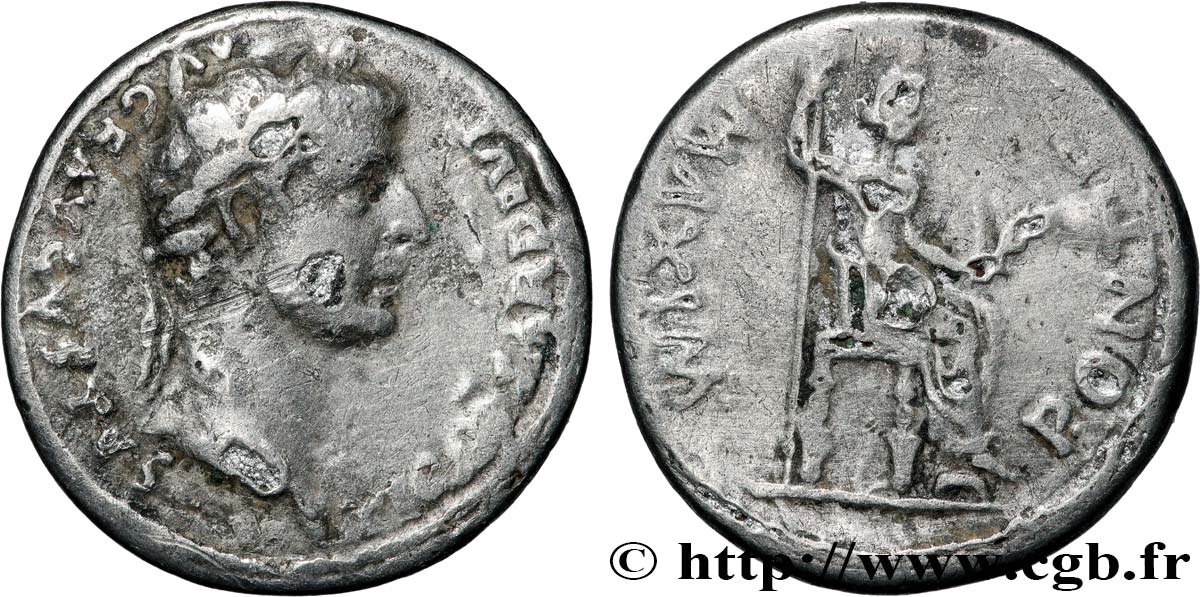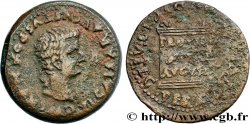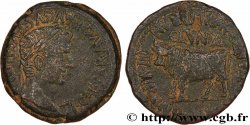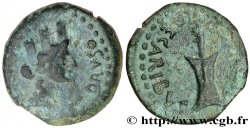Live auction - brm_860250 - TIBERIUS Denier fourré
You must signin and be an approved bidder to bid, LOGIN TO BID. Accounts are subject to approval and the approval process takes place within 48 hours. Do not wait until the day a sale closes to register. Clicking on "BID" constitutes acceptance of the terms of use of cgb.fr private live auctions.
Bids must be placed in whole Euro amounts only. The sale will start closing at the time stated on the item description; any bids received at the site after the closing time will not be executed. Transmission times may vary and bids could be rejected if you wait until the last second. For further information check the Live auction FAQ
All winning bids are subject to a 18% buyer’s fee.
All winning bids are subject to a 18% buyer’s fee.
| Estimate : | 300 € |
| Price : | 150 € |
| Maximum bid : | 150 € |
| End of the sale : | 24 October 2023 14:45:11 |
| bidders : | 1 bidder |
Type : Denier fourré
Date: c. 33-37
Mint name / Town : Lyon
Metal : silver
Millesimal fineness : 950 ‰
Diameter : 17,5 mm
Orientation dies : 6 h.
Weight : 2,91 g.
Coments on the condition:
Flan bien centré. Usure régulière, un portrait agréable de l’empereur au droit. Quelques petits coups. Patine grise
Catalogue references :
Obverse
Obverse legend : TI CAESAR DIVI - AVG F AVGVSTVS.
Obverse description : Tête laurée de Tibère à droite (O*).
Obverse translation : “Tiberius Cæsar Divi Augusti Filius Augustus”, (Tibère César fils du divin Auguste, auguste).
Reverse
Reverse legend : PONTIF - MAXIM.
Reverse description : Pax (la Paix) ou Livie assise à droite sur un siège décoré, tenant une branche d'olivier de la main gauche et de la droite un long sceptre.
Reverse translation : “Pontifex Maximus”, (Grand pontife).
Commentary
Métal cristallisé. Comme pour le denier d'Auguste, cette pièce appartient à l'atelier impérial de Lyon et ce type de denier a circulé pendant pratiquement un siècle. Il se rencontre très souvent avec des monnaies gauloises de la phase terminale dans les fouilles archéologiques. C’est la monnaie romaine la plus courante en Gaule pour les Julio-Claudiens. La cinquième émission se caractérise par un socle représenté par une seule ligne et les pieds du siège sont ornés de fleurons ; les pieds de Livie reposent sur un tabouret ; au droit, les rubans de la couronne de type 3 retombent en petites ondulations, le portrait reste réaliste.
Crystallized metal. As with the Augustan denarius, this coin belongs to the imperial mint of Lyon and this type of denarius circulated for almost a century. It is very often found with Gallic coins from the late phase in archaeological excavations. It is the most common Roman coin in Gaul for the Julio-Claudians. The fifth issue is characterized by a base represented by a single line and the legs of the seat are decorated with fleurons; Livia's feet rest on a stool; on the obverse, the ribbons of the type 3 crown fall in small waves, the portrait remains realistic
Crystallized metal. As with the Augustan denarius, this coin belongs to the imperial mint of Lyon and this type of denarius circulated for almost a century. It is very often found with Gallic coins from the late phase in archaeological excavations. It is the most common Roman coin in Gaul for the Julio-Claudians. The fifth issue is characterized by a base represented by a single line and the legs of the seat are decorated with fleurons; Livia's feet rest on a stool; on the obverse, the ribbons of the type 3 crown fall in small waves, the portrait remains realistic








 Report a mistake
Report a mistake Print the page
Print the page Share my selection
Share my selection Ask a question
Ask a question Consign / sell
Consign / sell
 Full data
Full data









